As a symbol of Eastern jewelry, jadeite embodies cultural heritage and natural beauty, with bracelets being a popular choice for everyday wear. However, the market is rife with counterfeits—from dyed glass to acid-washed and resin-filled pieces—making pitfalls commonplace. How to select an authentic jadeite bracelet? Master these 5 key points to develop your “keen eye.”
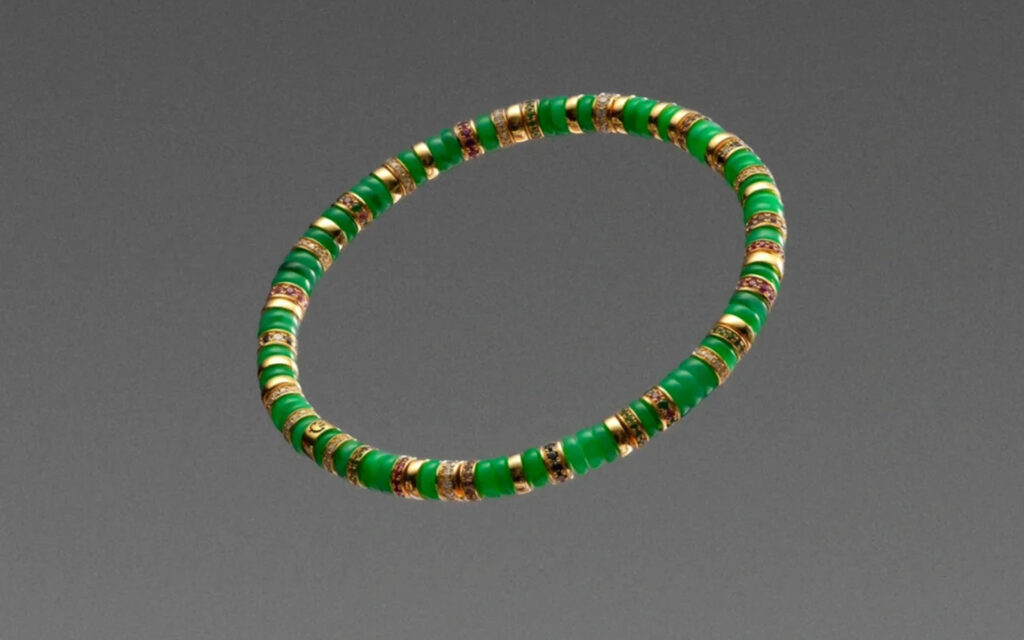
1. Authenticity: Natural A-grade is the baseline
The jadeite market categorizes stones as “A, B, or C grade”:
A-grade: Pure natural jadeite, only physically cut and polished, holds the highest value;
B-grade: Acid-washed to remove impurities, then filled with resin, compromising its structure and prone to fading with prolonged wear;
C-grade: Artificially dyed, with color only on the surface and visible under UV light.
Avoid pitfalls by:
Requiring an authoritative certification (e.g., NGTC, GIA) and verifying the certificate number matches the actual piece;
Observe color distribution: Natural jadeite features thread-like or dotted color roots; dyed jadeite displays flat, unnatural color without transitions.
Listen to the sound: Gently tap the bracelet—natural jadeite produces a crisp sound, while B-grade jadeite sounds dull due to resin injection.
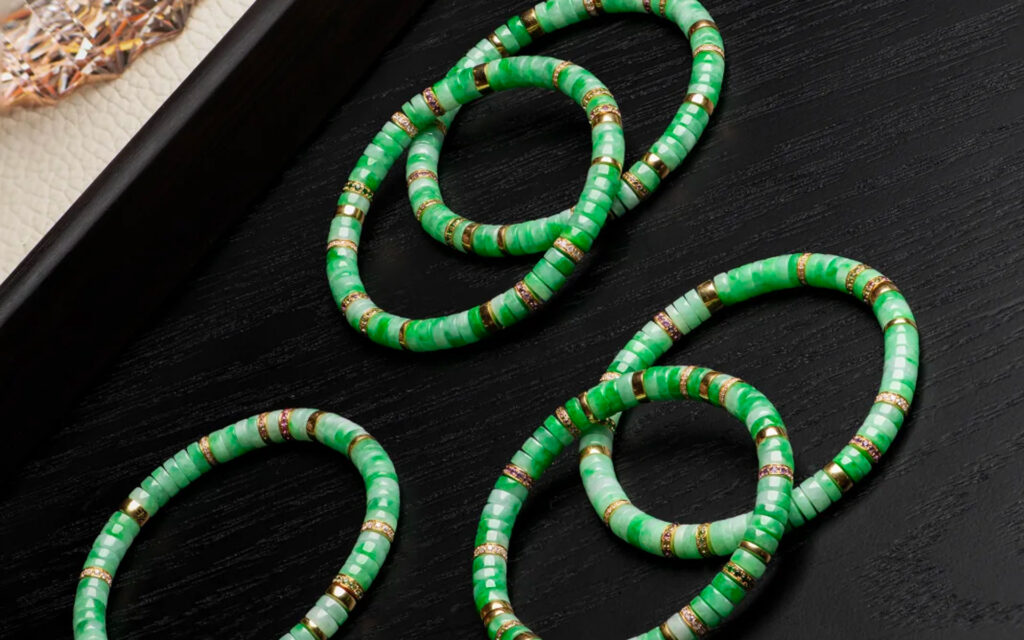
2. Assess Quality and Water Content: Grading from “Bean-like” to “Glass-like”
Quality and water content form the core of jadeite’s value, directly influencing transparency and luster:
Glass-like: Crystal-clear transparency with strong fluorescence, representing the highest grade;
Ice-like: Semi-translucent with excellent water content, offering high value for money;
Glutinous rice-like: Slightly translucent with a fine texture, ideal for daily wear;
Bean-like: Noticeable granular texture with low transparency, affordably priced.
Avoid pitfalls:
Prioritize ice-like or higher grades, avoiding dry, dull “brick-like” materials;
Inspect under natural light: High-quality jadeite appears vibrant under varying light conditions, while inferior pieces appear dull.
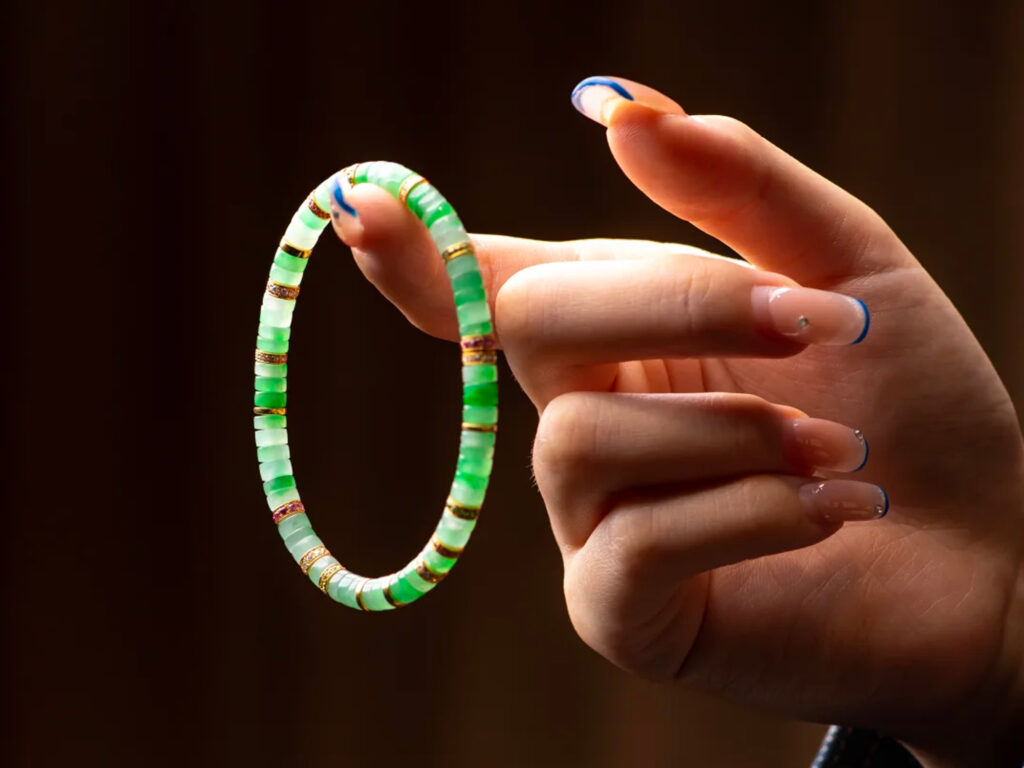
3. Selecting Color: Richness, Brightness, Purity, and Uniformity are essential
Green is prized in jadeite, though red, purple, and yellow hues are also valuable. Superior color must meet these criteria:
Rich: High saturation, not overly pale;
Bright: Vivid and luminous, without dullness;
Purity: True hue without impurities;
Evenness: Uniform distribution without distinct patches.
Avoid pitfalls:
Beware of “dyed jadeite”: Color accumulates along cracks or reveals pigment deposits under strong light;
Avoid “fades in daylight”: Some purple jadeite lightens under natural light—inspect from multiple angles;
On a budget? Opt for “floating flower” or “golden thread” varieties, valued for their unique characteristics.
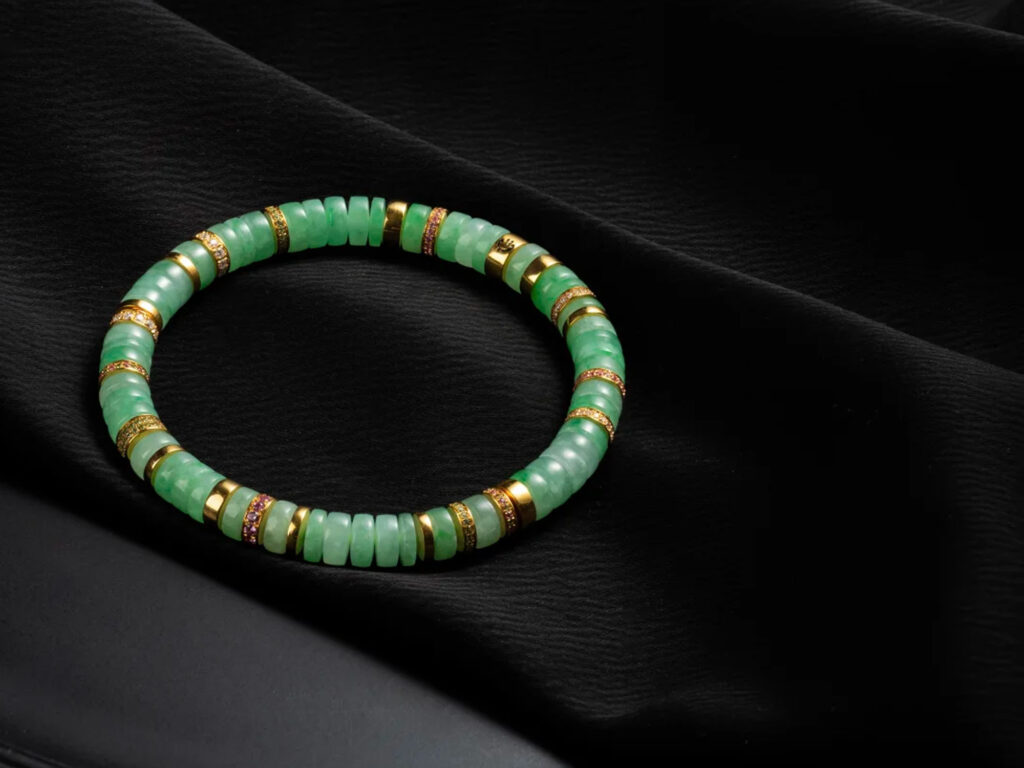
4. Assess Craftsmanship: Details Define Quality
Bracelet craftsmanship directly impacts comfort and aesthetics:
Bead Roundness: Pearls should be plump, flawless, and uniformly sized;
Hole Smoothness: Stringing holes must be polished smooth to prevent skin irritation;
Design coordination: Metal accents (e.g., K-gold, silver) must harmonize with the jadeite’s style to avoid a cheap appearance.
Avoid pitfalls:
Rotate beads for inspection: Inferior pieces may exhibit uneven sizes or surface irregularities;
Gently pull the cord: Ensure knots are secure to prevent wear-off;
Avoid excessive embellishment: Complex designs may conceal jadeite flaws—choose carefully.
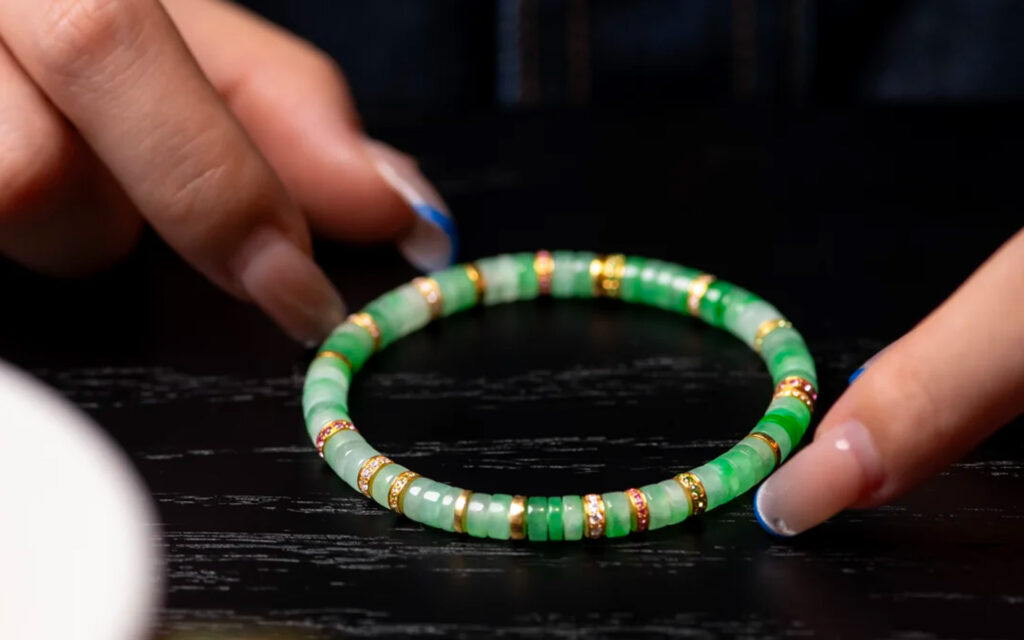
5. Choose Your Source: Reputable Sellers Matter More Than Low Prices
Your purchasing channel directly impacts after-sales support and dispute resolution:
Brand boutiques: Guaranteed quality but higher premiums;
Specialty jewelry stores: Offer on-site appraisal, verify credentials;
Online platforms: Prioritize sellers with re-inspection support and return policies;
Tourist attractions: Proceed with caution! “Burmese jadeite” may be locally acid-washed.
Pitfall avoidance techniques:
Reject bargain-hunting mentality: Jade priced significantly below market value is likely fraudulent;
Request invoices and appraisal certificates explicitly stating “Natural A-grade Jadeite”;
Re-inspection: Have your purchase verified at a local jewelry testing center post-purchase.
Selecting a jadeite bracelet requires balancing aesthetics with rationality, avoiding misdirection from “storytelling marketing” or “low-price temptations.” Remember: Natural A-grade jadeite is the baseline, with quality, water, color, and craftsmanship as core factors, and reliable sourcing as your safeguard. Master these five key points, and you’ll not only avoid pitfalls but also select a timeless piece of jade that stands the test of time.